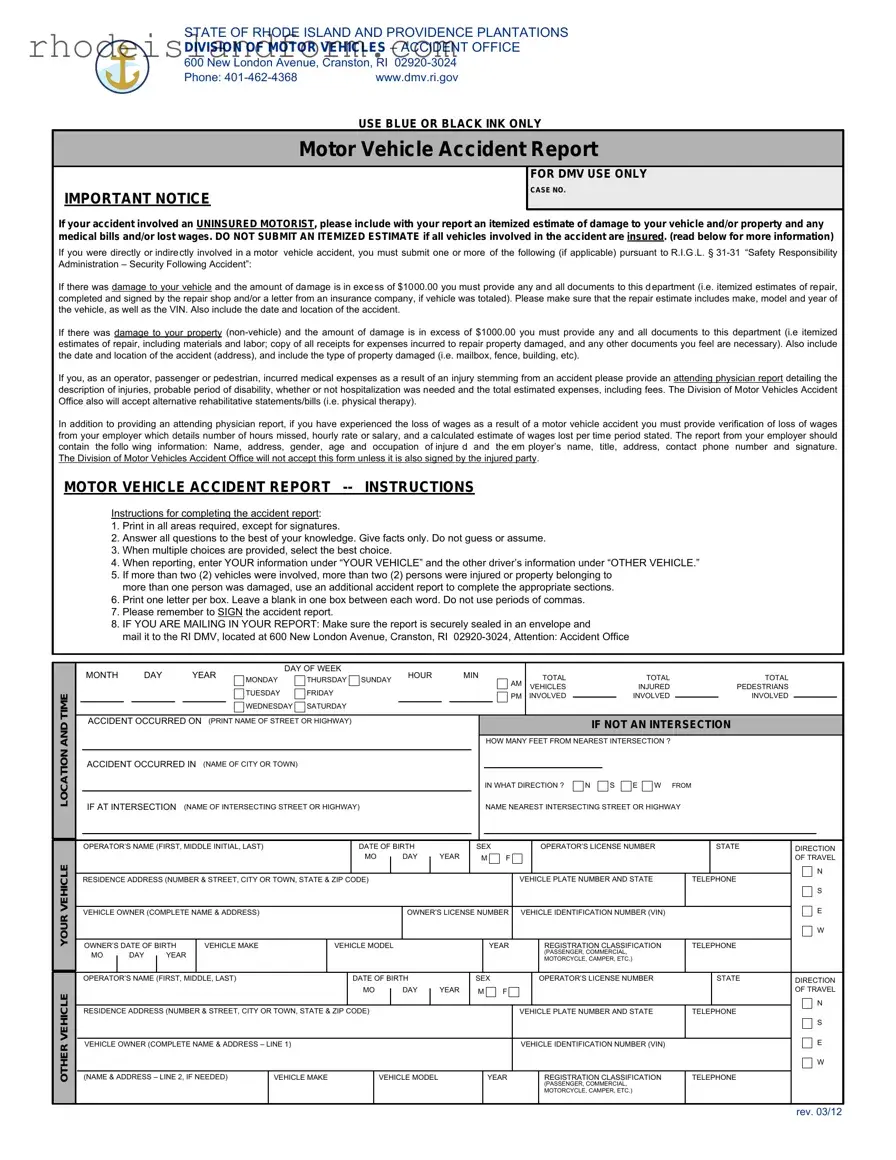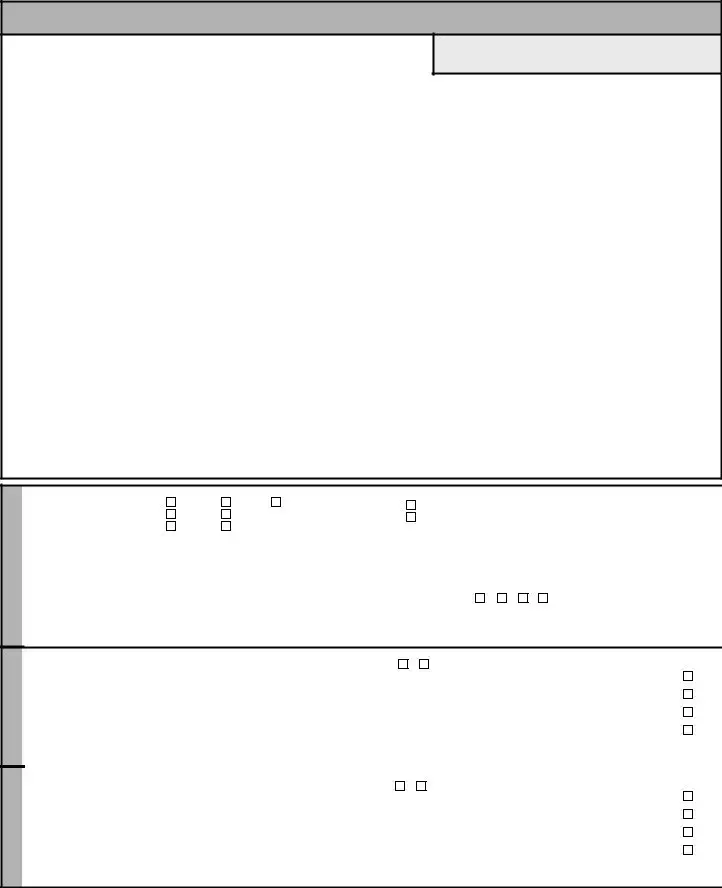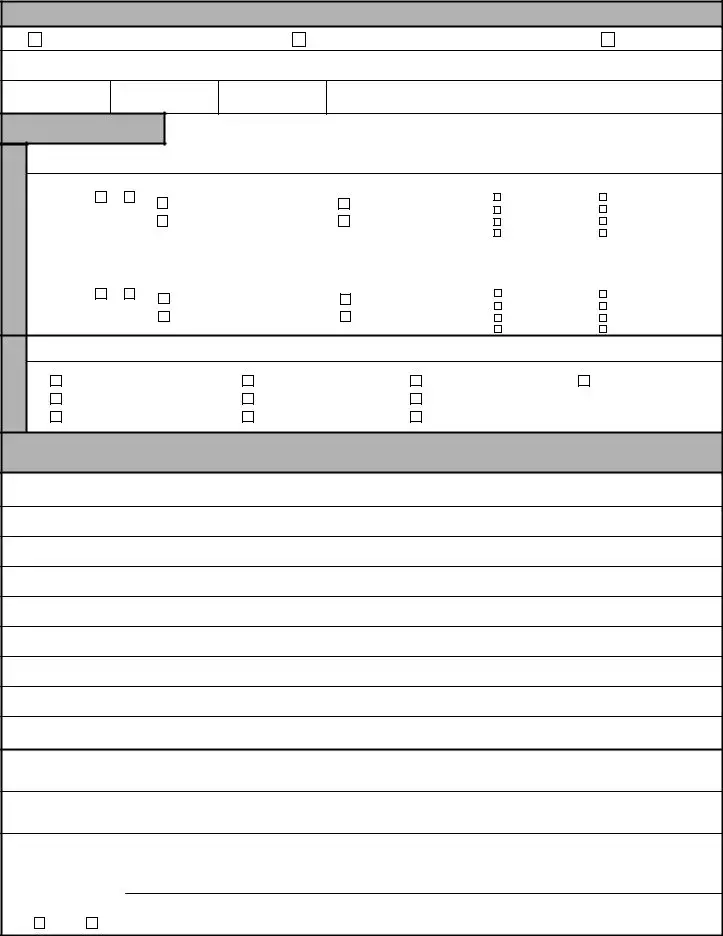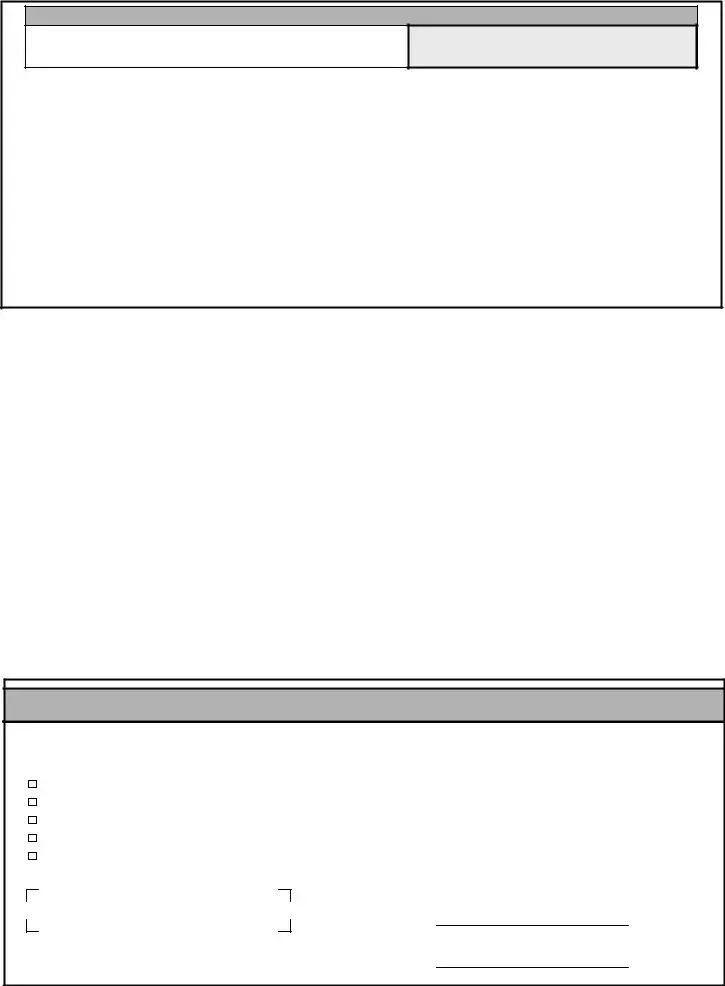When completing the Rhode Island Motor Vehicle Accident Report form, it is crucial to use either blue or black ink to ensure the clarity and legibility of the information provided.
For accidents involving an uninsured motorist, the involved parties are required to submit an itemized estimate of damages and any relevant medical bills or lost wages. However, if all vehicles involved have insurance, submitting an itemized estimate is not necessary.
Documenting and reporting vehicle and property damage accurately is essential, especially when the estimated repair costs exceed $1000. This includes providing detailed repair estimates, letters from insurance companies if the vehicle was totaled, and receipts for property repair.
In cases where injuries occur, it is important to include an attending physician report with the accident report. This report should detail the nature of the injuries, the expected period of disability, hospitalization needs, and the estimated costs for medical care.
If the accident results in a loss of wages, verification from the employer detailing the loss is necessary. This documentation should include hours missed, rate of pay, and total estimated wage loss, alongside personal and employer information.
The form requires detailed information about the vehicles and individuals involved in the accident, including names, addresses, vehicle identification numbers (VINs), and insurance details.
It is essential to accurately describe the accident, including the location, time, and circumstances in the specified sections of the form. Providing a clear and factual account of the accident will aid in the processing of the report.
Signing the accident report form is mandatory. An unsigned form may not be accepted by the Division of Motor Vehicles Accident Office, and this could delay the resolution of any claims or legal matters associated with the accident.
Once completed, the report should be mailed securely to the Rhode Island Division of Motor Vehicles at the specified address. Ensuring the report is properly sealed and addressed helps in timely processing and reduces the chance of delays.



